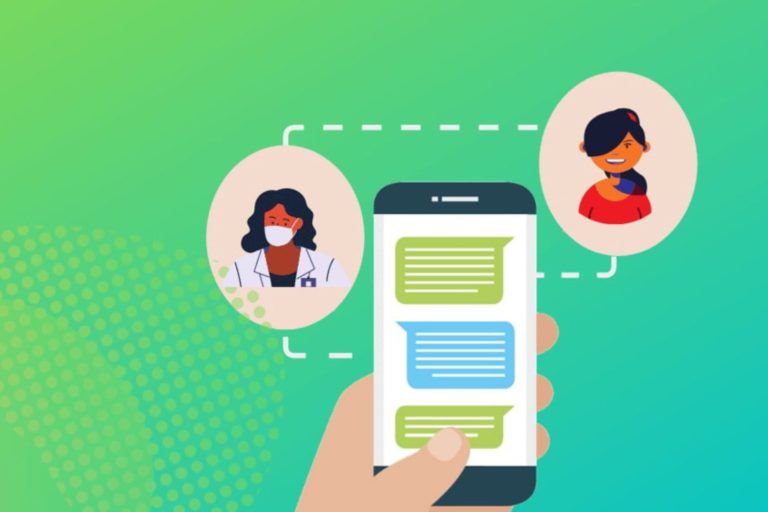Evaluating a Patient Intake Software? Consider These 12 Factors Before Implementing
Patient intake is like the first impression for patients, setting the tone for practice operations and impacting care outcomes. But what happens when patients fill stacks of paper and wait in lengthy lines while your staff hurriedly inputs all the patient data manually? You have frustrated patients, burnt-out staff, and a chaotic environment. That’s the drawback of a traditional, manual patient intake approach.
Digital patient intake tools are the key to streamlining operations and enhancing patient experience. These tools eliminate manual tasks, improve workflows, strengthen communication, and accelerate revenue collection. Given that 86% of healthcare blunders are caused by manual administrative errors, your practice can also ensure accurate data collection and quality care by choosing the digital way.
However, how do you select the right patient intake software that can deliver value to your practice and its unique needs? Here are the top 12 factors you can consider to stay ahead of the competition and thrive in this ever-evolving landscape:
Best Practices to Evaluate Patient Intake Software:
1. Does your patient intake solution allow patients to self-schedule?
Allowing patients to self-schedule their appointments not only ease your staff’s load but also offers patients the flexibility to book an appointment conveniently. Does your vendor offer this feature and provide the capability to set up AI-based workflows for better schedule management?
2. Does it seamlessly integrate with your EHR?
Digitizing intake forms is only a fraction. Your digital transformation for patient intake is complete only when the patient data captured during intake goes directly into the corresponding fields of your EHR. Evaluating whether your patient intake software supports interoperability standards with your EHR is critical to ensure a smooth flow of information between systems. Does your solution provider offer seamless integration to minimize duplicate data entry and enhance overall staff efficiency?
3. Can your patient intake solution automate appointment and payment reminders and offer flexibility to personalize the messaging?
Sending automated appointment and payment reminders helps reduce no-shows and boost collections. With an automated schedule, patients will receive timely nudges based on a fixed interval without the staff spending both time and effort. Does your solution provide automated reminders? Also, can you tailor your messaging based on different appointment types to send targeted communication?
4. Can it do real-time insurance details verification?
Insurance details are a crucial aspect of patient intake, and manually filling in the details is time-consuming and error centric. One mistake can lead to complications down the line. Implementing a solution that offers real-time insurance verification will help capture accurate patient responsibility and ensure accurate billing without straining your billing team. Can your software fetch patient insurance details? Will it be able to verify patient eligibility for preventive services?
5. Is your solution provider mobile accessible?
Mobile devices have become indispensable, and there are multiple ways a practice can use the patient’s own device to simplify check-in. For instance, patients can pre-register and check in via mobile from anywhere. Plus, patients can scan a QR code to confirm their arrival at the practice. Does your solution provide such mobile-based check-in options?
6. Does it provide telehealth services?
With telehealth services, providers can conduct virtual visits to expand access to care. Does your solution allow patients to complete forms for a telehealth visit? Is there an option to enter the virtual waiting room with a simple click of a link?
7. Does your solution support a convenient communication hub for patients and providers?
Multiple channels exist to engage patients and communicate information easily. CheckinAsyst’s Secure Chat offers a two-way, HIPAA-compliant messaging option for staff and patients. Broadcasts are a great way to reach a large population to promote health campaigns, annual screenings, vaccine drives, new services, and more. Does your solution offer such communication tools via email and SMS?
8. Can your solution provide patients with convenient payment channels and easy revenue collection for practice?
From offering digital payment channels to tools that simplify collection, does your solution provider have some of the features below?
- Flexible patient payments at various care stages—during pre-registration, via the website widget, or at the front desk
- Configurable payment plans based on a fixed amount or duration.
- Automatic transaction capture and posting to the PM system.
- Analytical reports to track daily collections, reconcile payments, and identify missed opportunities for collection.
9. Does it offer a user-friendly centralized interface?
Your staff already have a lot on their plates, and they can’t be seen juggling between highly complicated and ineffective software.
An intuitive, centralized, and user-friendly dashboard is essential to handling all patient intake needs and accommodating the needs of various users, including receptionists, clinical teams, and healthcare practitioners. Does your solution provide a centralized dashboard for your staff to monitor patient check-in status, payment processing, and patient communication alerts?
10. Can you set up automated patient satisfaction surveys?
Measuring Patient Satisfaction and feedback at different stages of care adds excellent value to determining a practice’s efficiency. Automating post-visit patient satisfaction surveys and including online review website links for patients who submit a high rating during the surveys can be crucial to building your reputation. Does your solution provide customizable and flexible patient surveys?
11. Does your solution provider offer skilled teams for on-site implementation Support?
The patient intake software implementation doesn’t end just after implementation, rather it needs constant support services and training. A responsive support team and comprehensive training programs contribute to ongoing support to address any issues promptly and ensures that your staff is well-equipped to utilize the software to its full potential. Does your solution provider offer an on-site support team to enable the process?
12. Does the system ensure security standards?
With such high regulations and strict privacy and security standards, it is critical to ensure the software adheres to regulatory requirements, robust security features, encryption protocols, and compliance with industry standards to stay compliant. Can your solution ensure secure data exchange with your EHR/PM without storing PHI? Is the system HIPAA and SOC 2 Type 2 compliant?
Closing Thoughts:
To sum up, practices need to carefully evaluate a patient intake software based on factors that align with your healthcare organization’s unique needs and goals.
Want to take the first step into transforming your patient intake and communication processes? Download this guide for a checklist that you can use while making your purchasing decision.







